Pothos and Philodendrons are two of the most popular houseplants for their beauty, ease of care, and ability to purify the air. Both plants are in the Araceae family and share similar traits, making it difficult for many people to tell them apart.

However, upon closer inspection, there are several key differences between Pothos and Philodendrons, from their physical appearance to their growth patterns.
Differences between Pothos and Philodendron
Whether you’re a seasoned plant parent or a beginner, it’s important to understand the distinctions between these two beloved houseplants to ensure that you give them the care they need to thrive.
1. Physical Appearance
Pothos and Philodendrons have distinct differences in their physical appearance, including leaf shape, aerial roots, direction of leaves and the appearance of new growing leaves.
a. Leaf Shape:
Pothos leaves are generally smaller and have a more heart-shaped outline, and curved blade with a pointed tip while Philodendron leaves are typically more extensive and oval-shaped with the flat blade
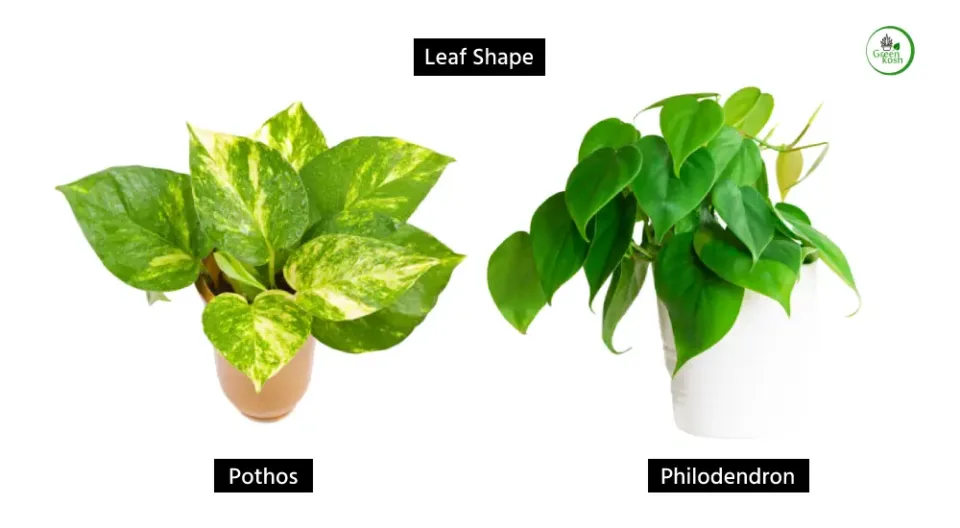
Additionally, Philodendron leaves are broader and rounded while Pothos leaves are more elongated and pointed. These differences in leaf shape can make it easier to differentiate between the two plants.
b. Leaf size:
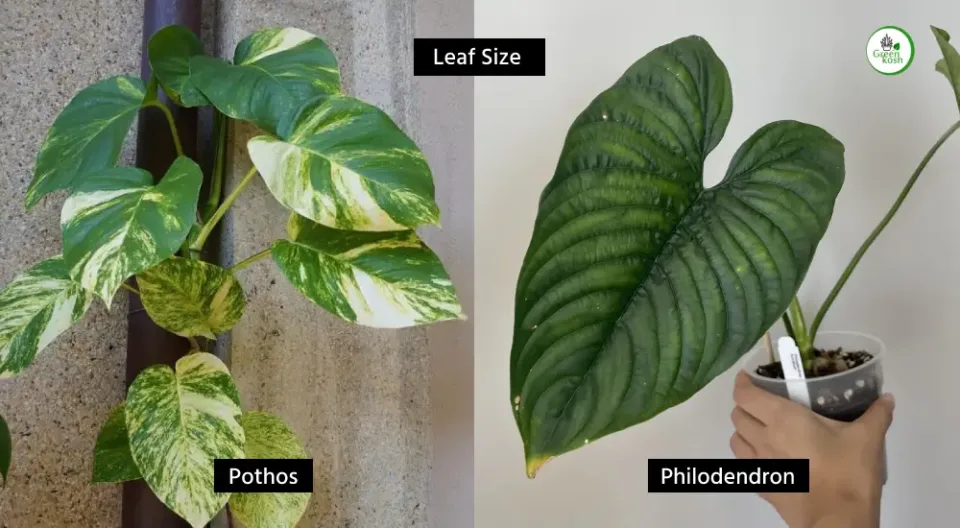
Pothos leaves are generally smaller, growing up to 12 inches in length, while Philodendron leaves can be much larger, growing up to 36 inches in length.
c. Leaf color:
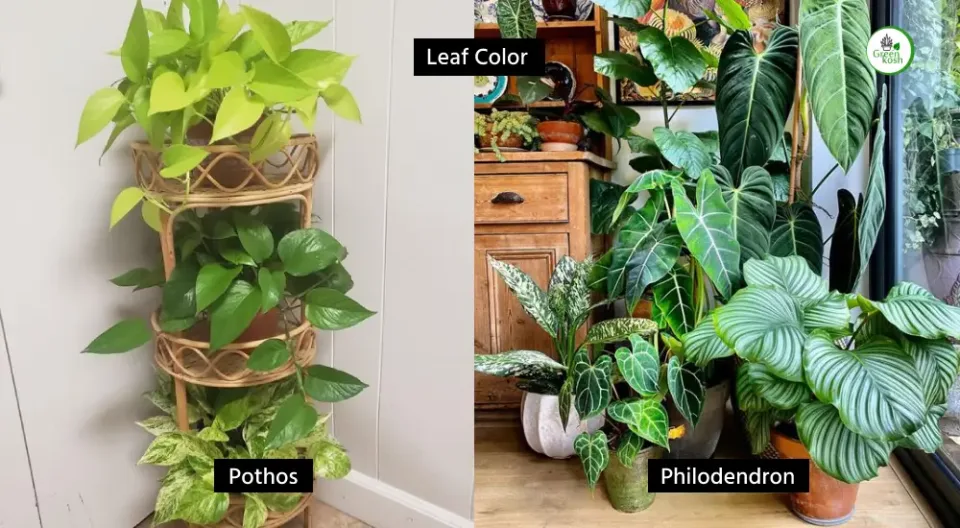
Pothos leaves are typically a solid green color, while Philodendron leaves can be a variety of colors, including green, red, burgundy, and even pink.
d. Aerial Roots:
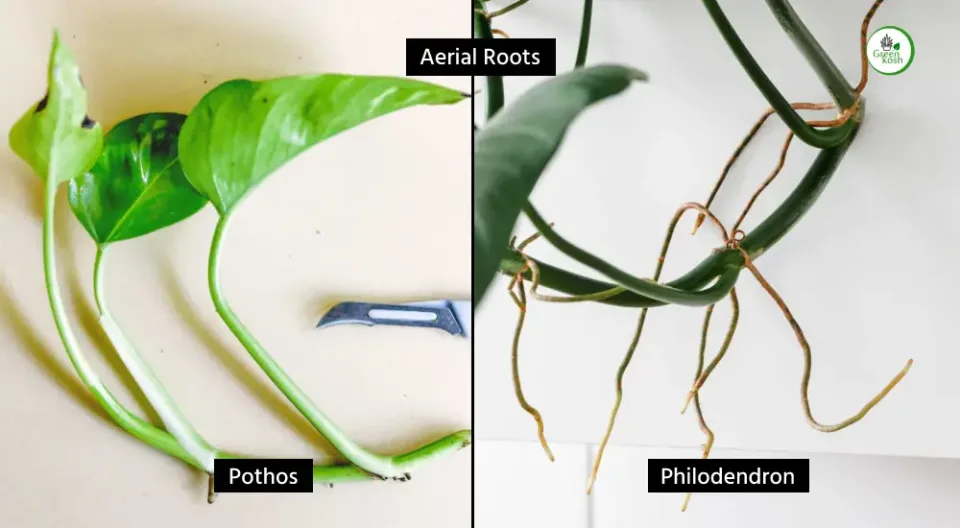
Pothos are known for their aerial roots, long, thin roots that grow out of the plant stem and can be used for climbing. Pothos plants have one long aerial root per node.
On the other hand, Philodendrons do not typically have prominent long aerial roots, although some species may produce small aerial roots at the base of the stem or many aerial roots per node.
Overall, aerial roots are a key difference between Pothos and Philodendrons.
e. Direction of Grown Leaves:
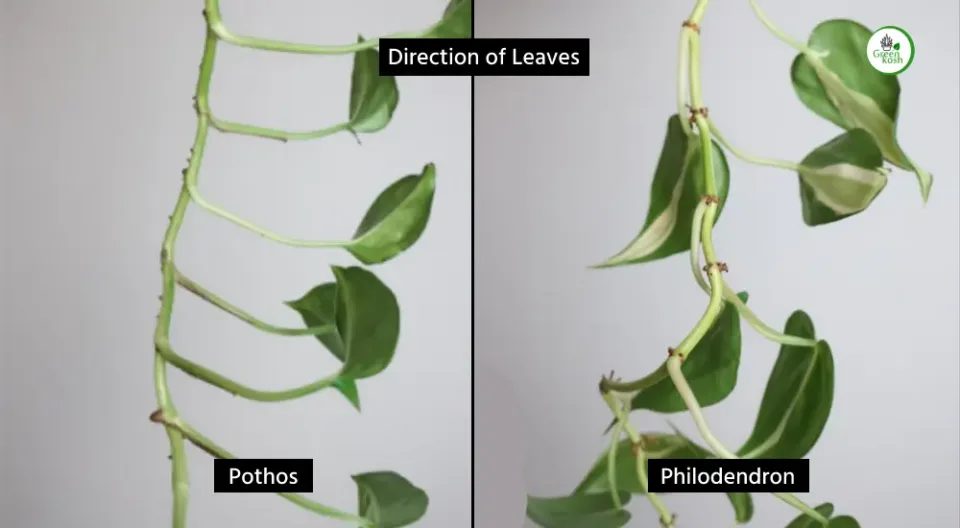
Pothos leaves tend to grow in a more uniform, symmetrical direction, while Philodendron leaves may grow in different directions or have a more irregular shape.
f. Stem Color:
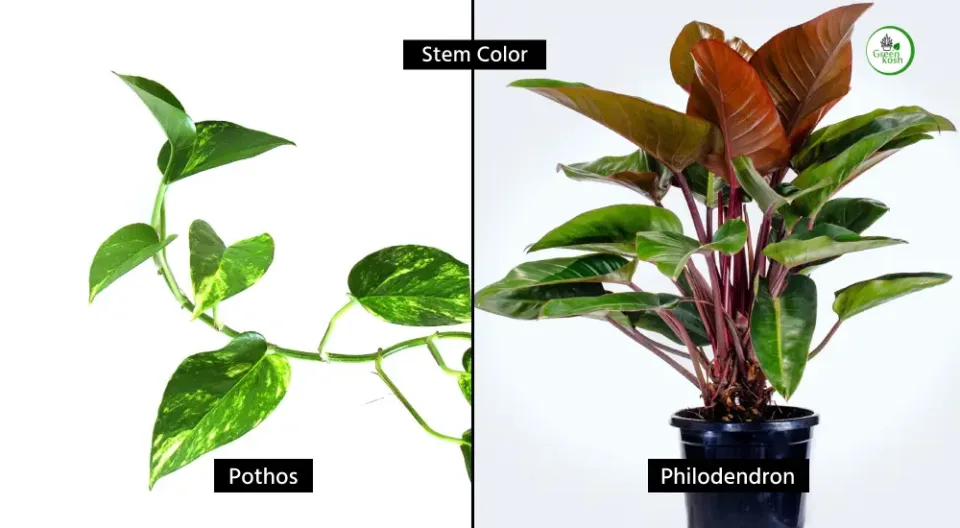
Pothos stems are typically green, while Philodendron stems may be reddish-brown or a similar color.
f. The appearance of new Growing Leaves:
In pothos, new leaves grow from the petiolar sheath and keep attaching while in Philodendrons, new leaves emerge from separate cataphylls that will eventually turn brown & fall off.
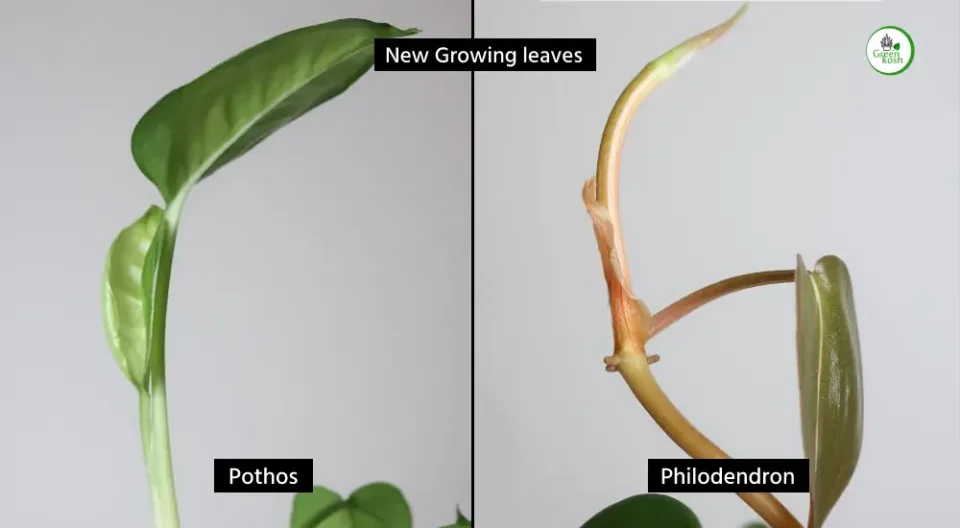
The growth of new leaves in Philodendrons is often more episodic, with new leaves growing in spurts and appearing at intervals rather than continuously.
Additionally, some Philodendron species may produce leaves that are a different color or have different patterns on the new growth, making them stand out from older leaves.
2. Toxicity
While both Pothos and Philodendrons are popular houseplants, they differ in toxicity.
Pothos are considered mildly toxic to pets and humans if ingested, while Philodendrons are considered moderately toxic.

Philodendrons contain calcium oxalate crystals that can cause skin irritation and swelling if they come into contact with skin or mucous membranes, and ingestion can cause more severe symptoms.
3. Care Requirements
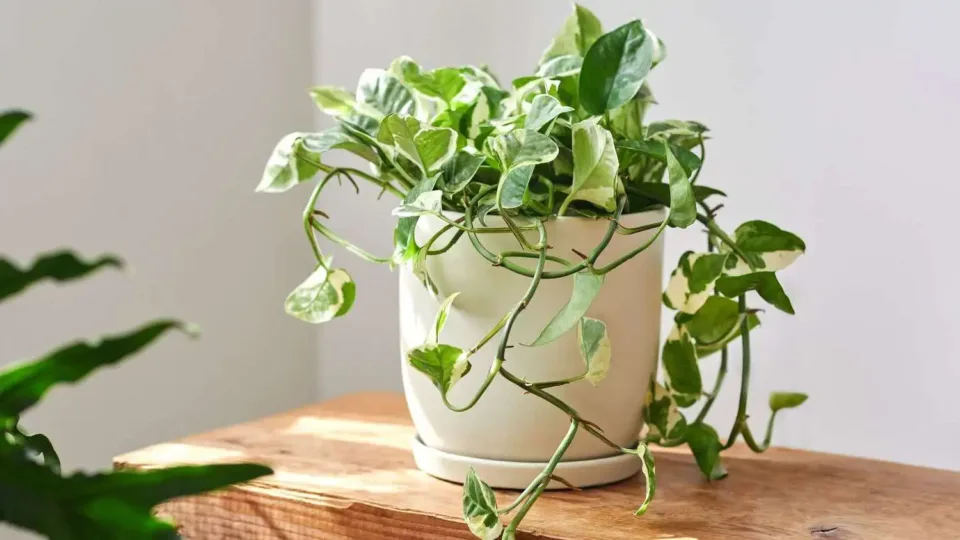
- Light requirements: Pothos plants can tolerate low to medium light levels, while Philodendron plants require brighter, indirect light to thrive.
- Watering needs: Pothos plants prefer to dry out between waterings and are more forgiving of underwatering, while Philodendron plants prefer consistently moist soil and are more sensitive to overwatering.
4. Price
Pothos and Philodendrons also differ in price.
Generally, Pothos are less expensive than Philodendron. This may be due to the fact that Pothos are easier to propagate and grow quickly, while Philodendrons can be more difficult to find and take longer to grow.
Also read: Philodendron Silver Sword
Common FAQs
Q1: Can Pothos and Philodendron be grown together?
Yes, Pothos and Philodendron can be grown together as they have similar care requirements. However, it’s important to make sure they have enough space to grow and don’t compete for resources.
Q2: Are Pothos and Philodendrons toxic to pets?
Yes, both Pothos and Philodendron are toxic to pets if ingested. However, Philodendron is more toxic and can cause severe reactions, including difficulty swallowing and breathing, in pets and humans.
Q3: Can Pothos and Philodendrons survive in low light conditions?
Pothos can tolerate low to medium light conditions, while Philodendron requires brighter, indirect light to thrive. However, both plants may struggle in very low light conditions and may not grow as well or produce new leaves.
Q4: How can I tell if my plant is a Pothos or a Philodendron?
The easiest way to tell Pothos and Philodendrons apart is by their leaf shape and size. Pothos leaves are generally smaller, and heart-shaped with a pointed tip, while Philodendron leaves can be much larger and may be lobed or split at the end. Additionally, Pothos plants often have more prominent aerial roots than Philodendron plants.
